Jewel your rattles: the rise of gifting luxury jewellery to children
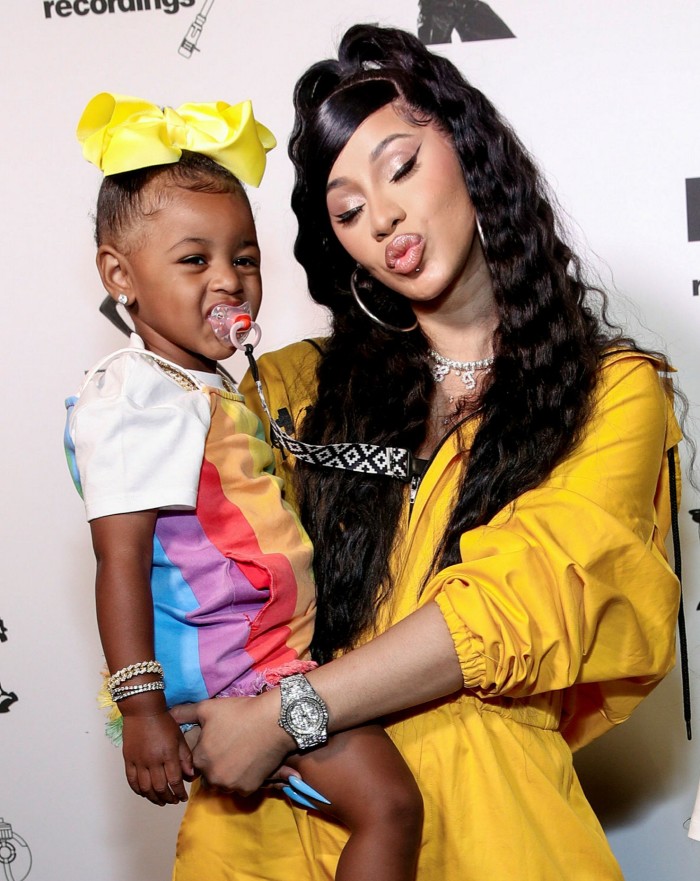
Roula Khalaf, Editor of the FT, selects her favourite stories in this weekly newsletter.
When Kulture Kiari Cephus, daughter of American rappers Cardi B and Offset, turned three this summer, her birthday party in New Jersey featured many of the universal signifiers of a toddler bash: a fairytale theme, fluffy party dresses, a bouncy castle. It was, of course, rather more lavish than most, but what really caused a stir were the presents from her parents.
Rather than wrapping up toys or games, Cardi B opened a black felt box in front of the toddler to reveal her gift. It was a diamond-encrusted heavy chain necklace with precious charms, including a Minnie Mouse head, created by Elliot Eliantte — a jeweller favoured by the hip hop crowd. Her father then presented her with a Richard Mille watch with a pink rubber strap and diamond bezel. The combined cost of the gifts would stretch into hundreds of thousands of dollars, since the RM010 watch alone with a full diamond set would retail at SFr263,000 ($288,000).
It would be easy to wave away this flamboyant gifting as the typical excess of celebrities seeking to raise their public profile through conspicuous displays of wealth. However, the gifting of luxury jewellery to children is on the rise across a range of well-heeled but lower-profile demographics, according to jewellers.
That same summer on Nantucket Island — a wealthy US enclave about 30 miles off Cape Cod — a father spent $80,000 on jewels for his two 12-year-old daughters at The Vault Nantucket, a local jewellery store. This time, there was no birthday to celebrate — it was simply a way to commemorate a happy vacation.
“Lots of dads do that for their little girls, it’s just a scale of how much you can spend,” says The Vault Nantucket’s owner, Katherine Jetter. “If money is no object, the sentiment is the same: take your girls out and let them feel special.”
The daughters were given the run of the store to choose what they wanted, eventually picking out a selection of colourful fine jewels made by Jetter herself, as well as brands including Melissa Kaye, Graziela and Octavia Elizabeth.
Not all jewellers are in favour of such behaviour, though. New-York-based jewellery designer Alison Lou — who became a mother in September — makes a $300 baby bracelet, but draws the line at more extravagant purchases for children. “Would I do it?” she says, mulling the possibility of gifting her newborn high-value jewels in the manner of Cardi B. Her answer is no.
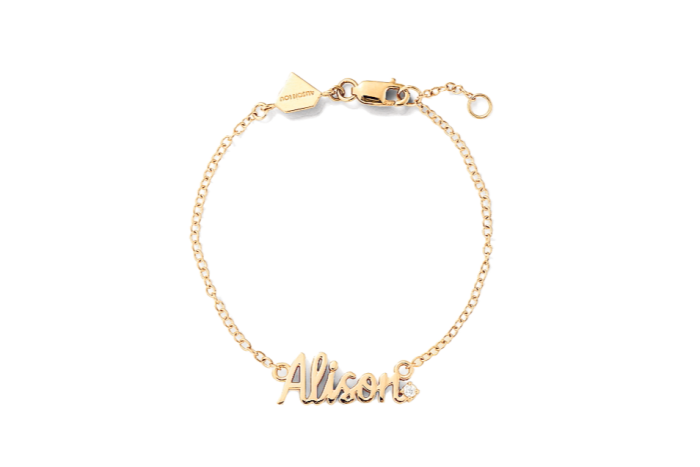
“I think, in recent years, we have seen some pretty outrageous luxurious gifts for celebrity children and, while I can appreciate the sentiment, I would definitely take a less-is-more approach,” she says.
Jetter, however, insists the buying spree witnessed in her shop was not unseemly, but quite the opposite. “Some people might find it very surprising that one would spend that much money on children, but this was very touching,” she suggests. “The father was very involved. After it was over, everyone in the shop took a moment to acknowledge what a crazy thing had just happened, but it was all super sweet.”
Los Angeles jewellery brand Suzanne Kalan has also reported instances of spontaneous and expensive gifting to children: one of its gold and diamond Fireworks bangles, which retails for $7,400, was recently bought for a 10-year old. Online jewellery retailer 77 Diamonds has also registered high-value sales for children, including a pair of £10,000 one-carat diamond earrings as a bat mitzvah gift for a 12-year-old girl, and a £32,000 pink diamond jewel as a christening present for a baby.
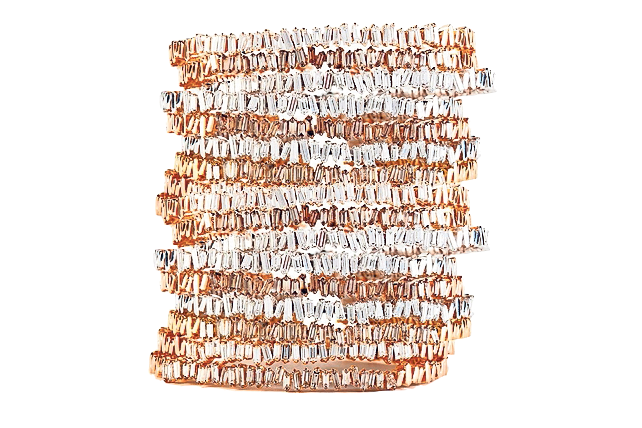
But, while designers now cater for these age groups, some advise against entrusting their creations to such young recipients.
Yoko London’s Michael Hakimian has created pearl jewels decorated with flowers and butterflies for children, sometimes costing in excess of £20,000, and has noted a rise in demand for such purchases in the past couple of years, especially in the Middle East. However, he says: “We always recommend that these high-value pieces are worn for special occasions, until the child reaches an age where they can take greater responsibility for caring for their jewellery.”
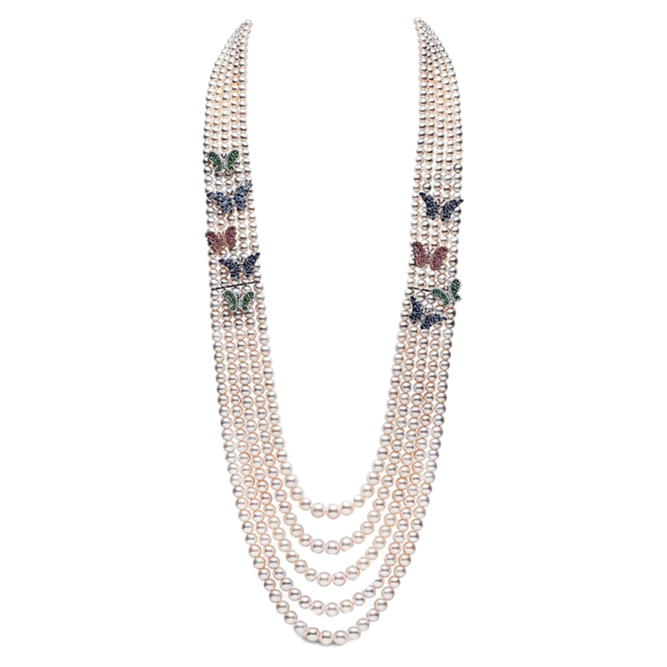
Some jewellery for children is intended to be worn immediately — especially the increasingly popular matching “mummy and me” jewels, such as Alison Lou’s gold and diamond bracelets that can be customised with names. Other pieces, though, are designed to be stores of wealth for the future. “One client buys a one-carat piece every year for her daughter’s birthday, which she will only be gifted later on, with the idea of building a legacy for her as you would with a unique art collection,” explains Celine Assimon, chief executive at De Beers Jewellery, which has a range intended to be bought for children, entitled My First De Beers.
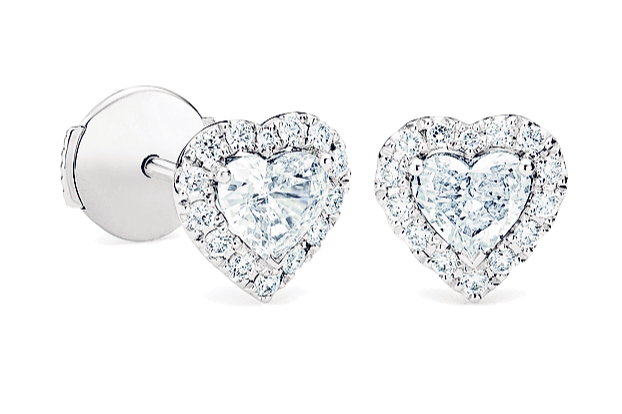
“For our clients, it’s less about being extravagant and more about gifting their children something truly special and eternal.”
Charm bracelets can also be a way to build a collection more gradually through a child’s adolescence. “Most buy a charm with each birthday and plan to give [the completed bracelet] to them when they are 18,” says Jenny McHugh, the jeweller behind the brand Campbell + Charlotte, whose whimsical use of gold and gemstone rainbows and dinosaurs has attracted younger fans. She is so taken by the idea that she is building one for her own daughter.
But, as many jewellers will point out, none of these is a new concept: buying jewellery for children has long held special significance in many cultures.
“Gifting children with gold and fine jewellery is a cultural phenomenon that dates back centuries and is popular in many cultures of the global majority,” says Jennifer Gandia, co-owner of New York jewellery store Greenwich St Jewelers.
“African, Indian, Asian, South American and Caribbean cultures all have a history of bejewelling their children,” she says.
“As a Puerto Rican woman, I had my ears pierced before I could speak. Starting young children with jewellery is a way of giving them something of value, a wish for that child to have wealth and abundance with a precious material that holds value. It makes sense that with more money and status, the jewellery gets bigger and blingier. It’s still a measure of wealth, but also one of love and blessing. A hope for that child’s future.”
Comments